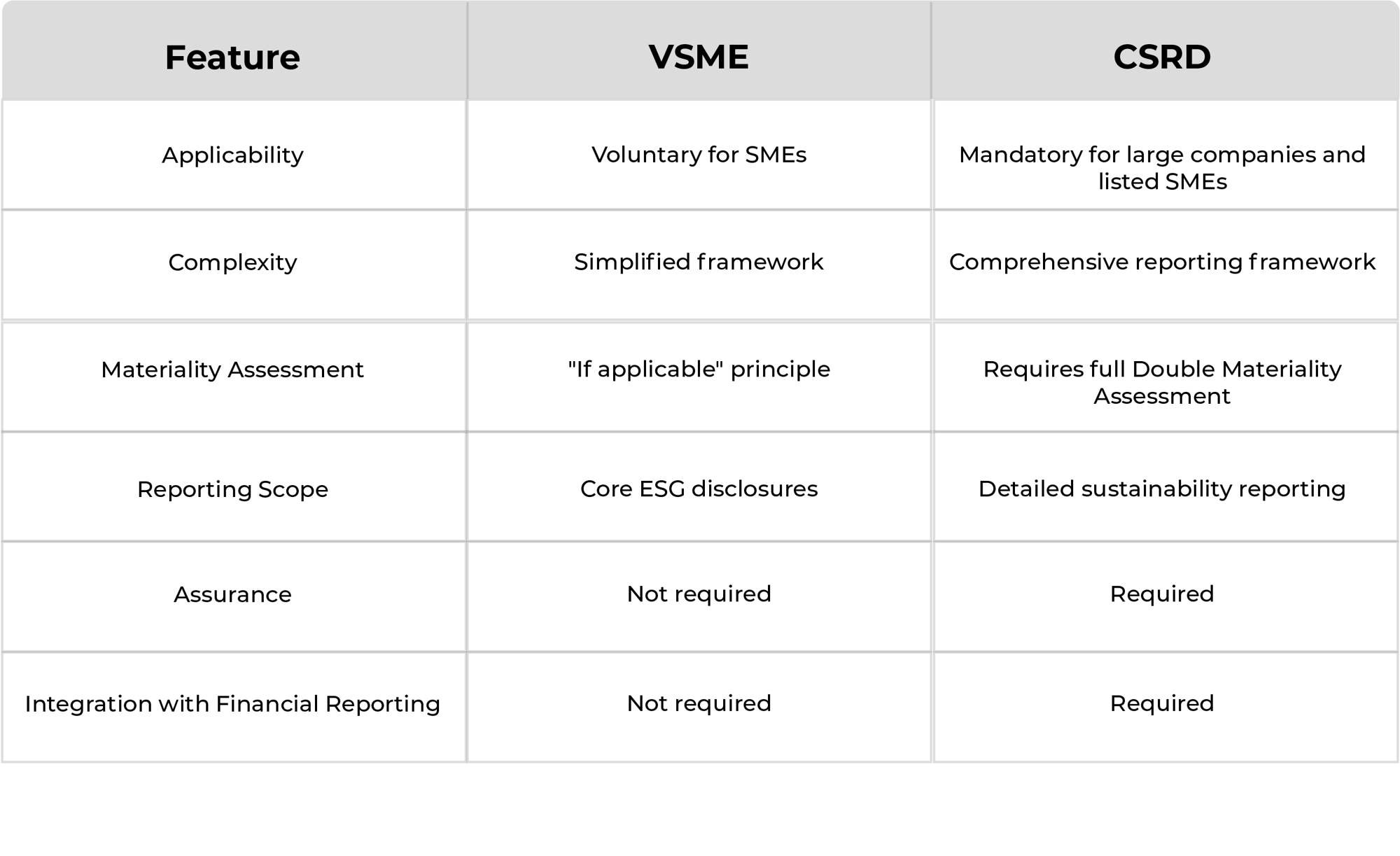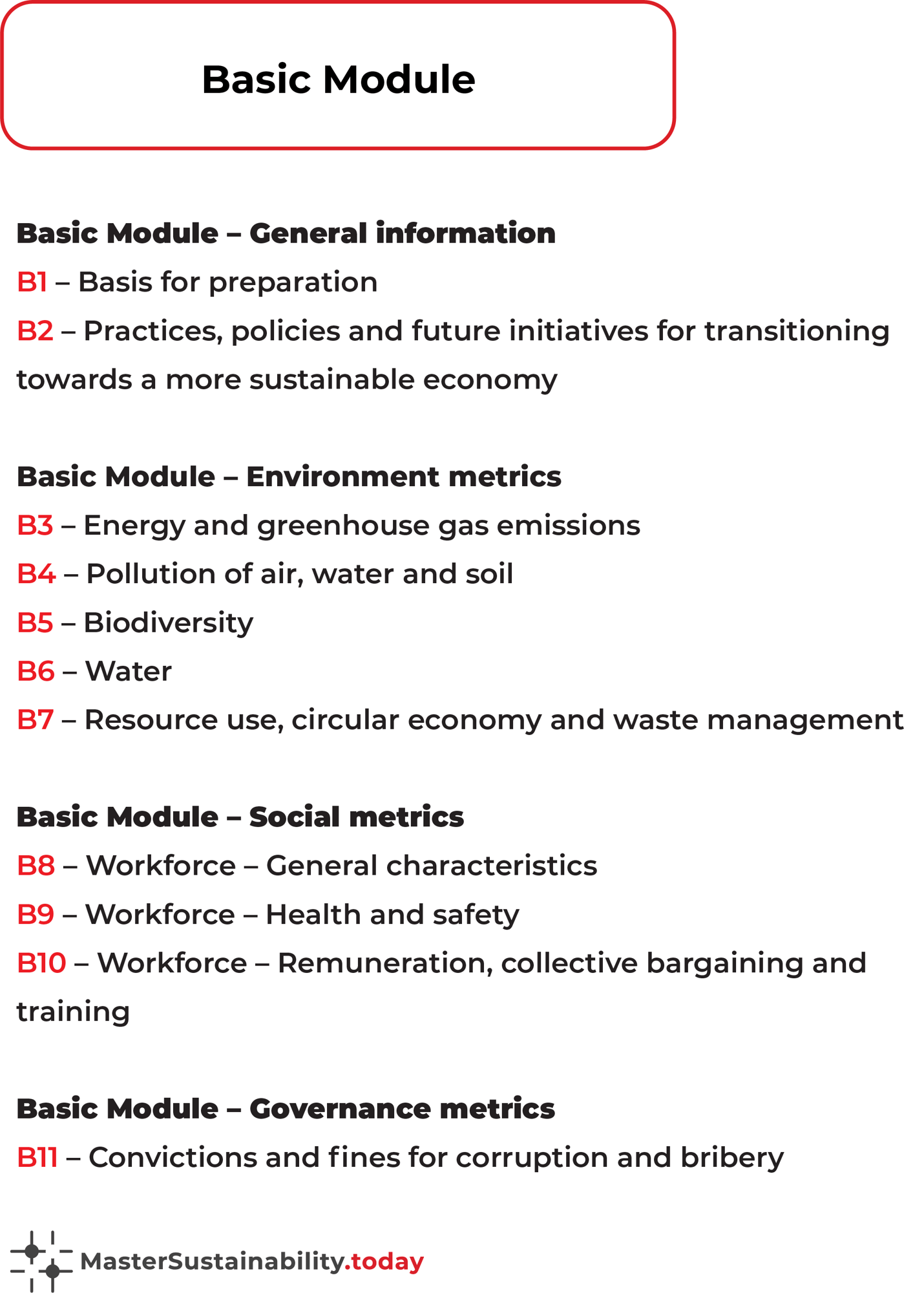A practical approach to VSME: everything you need to know
Sustainability reporting is evolving: VSME is more relevant than ever
On February 26, 2025, the European Commission introduced the 'Sustainability Omnibus' proposal, marking a significant shift in the EU's approach to sustainability reporting.
This proposal aims to simplify and reduce EU sustainability reporting requirements, potentially changing the landscape for businesses of all sizes. In light of these developments, the Voluntary Sustainability Reporting Standard for SMEs (VSME) has gained newfound importance.
As larger companies face potential changes in their reporting obligations, the VSME is poised to become the go-to reporting standard for SMEs and other businesses outside the proposed CSRD scope 3.
What is VSME?
The Voluntary Sustainability Reporting Standard for SMEs (VSME) is a simplified sustainability reporting framework introduced by the European Financial Reporting Advisory Group (EFRAG).
It's specifically designed for organisations that are not mandatory subject to the Corporate Sustainability Reporting Directive (CSRD). VSME consists of two modules: A basic module which focuses on fundamental ESG metrics that are easier to collect, suitable for micro-enterprises or companies with limited resources. Plus, a comprehensive module. This includes all elements from the Basic Module plus additional in-depth ESG reporting requirements to provide more detailed ESG disclosures.
2.1 - VSME compared to CSRD
By leveraging VSME, SMEs can effectively communicate their sustainability efforts, improve their market position, and contribute to the broader transition towards a more sustainable economy.
While both VSME and CSRD are sustainability reporting frameworks, they differ significantly in several aspects:

2.2 - Benefits of reporting with VSME
Adopting VSME for sustainability reporting offers a range of strategic advantages in today's business landscape. VSME provides a framework to enhance overall business performance and resilience.
- Enhanced stakeholder relationships:
By reporting on sustainability, SMEs can better meet the expectations of larger companies in their supply chain, improving business relationships and securing future partnerships. - Improved access to financing:
Many banks and investors consider ESG reporting when making financing decisions. VSME can give companies an edge when seeking funding by demonstrating their commitment to sustainability. - A future-proof organisation and competitive advantage:
Implementing VSME helps SMEs prepare for potential future regulations while gaining a competitive edge over other suppliers. This proactive approach positions them well for long-term success in a rapidly changing business environment.
Structure of the VSME: Two reporting modules
The VSME is designed with flexibility in mind, offering two distinct reporting modules to cater to the needs and capabilities of organisations.
3.1 - The basic module
The basic module is the foundation of VSME reporting, designed to be accessible and manageable for all companies, particularly micro-enterprises or those new to sustainability reporting.
Key features of the basic module include:
-
General disclosures: Company information, business model, and governance structure.
-
Core environmental indicators: Basic metrics on energy use, emissions, and resource consumption.
-
Essential social metrics: Fundamental data on workforce, health and safety, and community impact.
-
Basic governance disclosures: Information on business ethics and anti-corruption measures.

3.2 - The comprehensive module
The comprehensive module builds upon the basic module, offering a more in-depth approach to sustainability reporting. It's designed for organisations that want to provide a more detailed account of their sustainability efforts or those preparing for potential future regulatory requirements.
Additional elements in the comprehensive module include:
-
General disclosures: Company information, business model, and governance structure.
-
Core environmental indicators: Basic metrics on energy use, emissions, and resource consumption.
-
Essential social metrics: Fundamental data on workforce, health and safety, and community impact.
-
Basic governance disclosures: Information on business ethics and anti-corruption measures.
This module aligns more closely with the European Sustainability Reporting Standards (ESRS), making it suitable for organisations aiming for more robust sustainability reporting.

How to get started with VSME
Implementing VSME is a deliberate process that can be broken down into manageable steps. The following steps are a great starting point for setting yourself up for future success:
Step 1 - Assess your needs
Determine whether the Basic or Comprehensive Module best suits your company's size, resources, and stakeholder expectations. Consider consulting with industry peers or sustainability experts to gain insights into which module aligns best with your sector's reporting trends and stakeholder demands.
Step 2 - Inventory available data
Start collecting notes on where relevant ESG data is avaialble, focusing on core metrics such as energy consumption, workforce information, and governance practices. Conduct an automated analysis to identify areas where data collection processes need to be established or improved.
Step 3 - Select reporting software
Leverage specialized software designed for VSME reporting to streamline data collection and reporting. Ensure the chosen tool offers flexibility to accommodate both the Basic and Comprehensive Modules, allowing for seamless scaling of your reporting capabilities as your needs evolve.
Step 4 - Start a VSME implementation and governance process
By using best-practices and leveraging knowledge from VSME reporting experts you can work out a process for VSME reporting. This way you have a clear starting point and know what you can expect before making the investment.
Take a look at our VSME reporting platform (infographic)
Start with VSME and Master Sustainability
Take a look inside our platform and learn how VSME reporting software can set you up for success.
This guide not only provides insights into VSME and its relationship with CSRD, but also presents an integrated software solution designed to meet the requirements of VSME reporting.
Our tool simplifies the process of sustainability reporting, making it easier to comply with VSME standards and adapt to evolving regulatory landscapes.